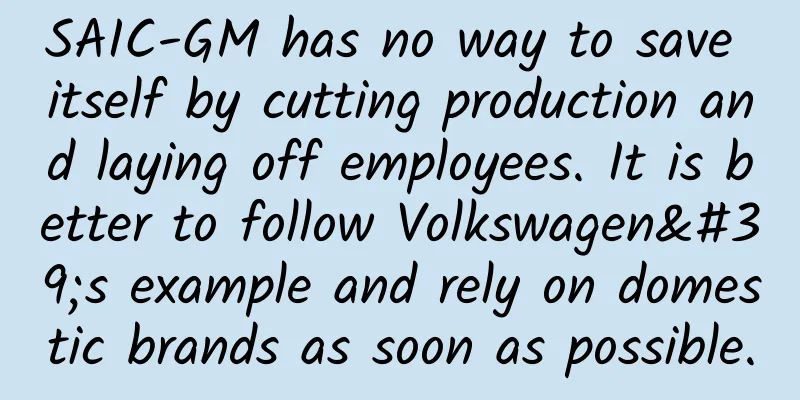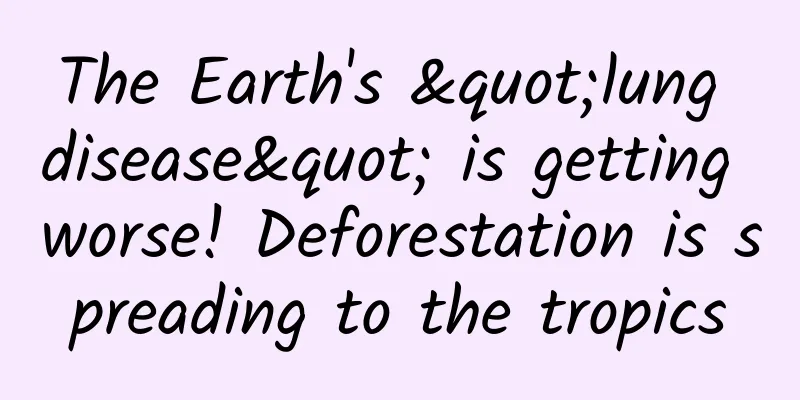Where does the uneaten food go? There is a lot of room for circular economy!

|
In today’s linear food system of “take it, throw it away”, most valuable nutrients are destined for rivers, landfills, incinerators or open dumps, with less than 2% of resources being used effectively. This not only endangers public health and increases carbon emissions, but also directly results in $5.7 trillion in costs each year. It is predicted that urban food consumption will account for 80% of the world's food consumption by 2050. How to eliminate waste? Recently, the food circular economy, which significantly affects the way food is grown through urban-rural interaction and other forms, has been quietly emerging. The vision of a circular food economy is to improve the environment while making healthy and nutritious food available to everyone. To achieve this vision, three major goals need to be achieved: 1. Purchase food that is grown using regenerative farming practices and, when possible, locally produced. 2. Make the best use of food. 3. Design and market healthier foods. From a city perspective, the Ellen MacArthur Foundation has partnered with four focus cities—Brussels, Belgium; Guelph, Canada; Porto, Portugal; and São Paulo, Brazil—to explore the potential health, environmental, and economic benefits of a circular food economy in different natural, demographic, socioeconomic, and policy contexts. 01 Brussels, Belgium: Supporting local sourcing and regeneratively grown food In the Brussels suburbs, there is an area of 1,500 square kilometers dedicated to agricultural cultivation, which meets the food needs of most Brussels citizens and a smaller number of people living in the Brussels suburbs. But in reality, only a small part of Brussels' food is produced in the suburbs. For example, although the production of apples and pears in the suburbs is ten times that consumed in Brussels (150,000 tons per year), 60% of the apples and pears sold in the city are imported. Brussels suburbs Image | bing Agricultural land in the suburbs of Brussels basically adopts traditional planting methods and relies heavily on the use of synthetic fertilizers. This puts the Belgian soil at great risk. Almost all soil types in its farmland have a decrease in soil organic carbon content. To improve this situation, the city of Brussels adopted the Good Food Strategy in 2015, hoping that by 2035, 30% of the fresh fruits and vegetables consumed by Brussels residents will come from the city and its suburbs. They predict that if this policy can be adopted for all types of food and the implementation of regenerative planting methods is ensured, and organic fertilizers are used instead of synthetic fertilizers, soil health will be improved and soil degradation will be avoided; when the soil is healthier, it will have a stronger water retention capacity, saving more than 21 million cubic meters of water each year, equivalent to half of the city's annual drinking water consumption. 02 Guelph, Canada: Using biosolids from wastewater treatment for regenerative agriculture Guelph, which has more than 2,300 farms, supports the food cycle by supporting all farms to adopt regenerative farming methods and convert organic waste into high-quality organic fertilizer and compost for cultivation. Today, Guelph has a robust household organic waste collection program in place and will continue to expand on this basis. At the same time, the city has also implemented a series of innovative programs to convert additional food by-products (such as inedible food by-products and human waste) into products that can improve the soil. Image | bing Biosolids produced by wastewater treatment facilities play an important role in the development of regenerative agriculture. In late 2018, Guelph signed a contract with Lystek Inc. to manage the 4,500 tons of biosolids produced annually by the city’s wastewater treatment facility and convert them into a commercially viable liquid organic fertilizer. It is estimated that Guelph's wastewater treatment generates considerable benefits, recovering approximately $34,000 worth of nitrogen and phosphorus each year and providing enough high-nutrient organic fertilizer to feed 1,000 hectares of farmland in the region. 03 Portugal - Porto: Cities collaborate to make the most of food The city of Porto wastes 14,000 tonnes of food every year, and only a small fraction of that waste is put to good use, but the Porto and surrounding Metropolitan Area (PMA) is taking action to improve the situation. The cooperatives Refood (reborn food) and Fruta Feia (ugly fruit) are good examples of this. Refood is dedicated to repurposing food waste, while Fruta Feia aims to encourage the consumption of blemished fruit and vegetables through effective marketing. Image | pixabay Currently, food bank donations alone account for 13% of Porto’s edible food waste. Preventing food waste not only helps those who really need it, but also reduces the amount of food produced and wasted, thereby reducing the adverse impacts of food production and waste disposal. Now, the entire Porto Metropolitan Area is expected to further strengthen and expand its current food waste prevention program. If half of edible food waste is effectively used and not sent to landfill or incineration, the Porto Metropolitan Area could save $14 million per year in reduced food production and food waste. In addition, preventing food waste can also fight hunger. 04 Sao Paulo, Brazil: Towards a more resilient and inclusive urban food system São Paulo's metropolitan agricultural area has become an important producer of fresh food. About 54% of existing peri-urban farmland would have to be used to meet the city's total demand for fruits and vegetables, especially leafy greens. Relocalizing food production in São Paulo could provide a more resilient food supply system for its citizens. Local production will also bring more affordable food prices and provide an important source of income for vulnerable groups in the suburbs. More importantly, it can help residents of the suburbs reintegrate into the city's socioeconomic development. This will help advance two goals that São Paulo has set for 2020: lowering its food system's ranking from medium to low and creating more jobs for the poor. Image | bing Currently, about 40% of peri-urban farmers still use no-till and crop rotation, but São Paulo’s agroecology movement, with supportive mechanisms and incentives from city and state government action plans, will help all local farmers adopt regenerative farming methods. If the city of São Paulo could adopt procurement guidelines that favor local and regenerative production, public procurement alone could absorb the food produced on 71,500 hectares of regenerative farmland (equivalent to 73% of peri-urban farmland). Businesses can also play an important role in driving demand. The fate of food and the fate of human beings are closely related. Although the food recycling system has not yet been popularized and applied in China, we still hope that in order to respond to the call of the national sustainable development policy, relevant departments can reasonably build a food recycling system according to the specific conditions of cities or regions, implement support mechanisms and incentive plans in a timely manner, promote the effective linkage between the catering service industry and recycling manufacturers, reduce food waste, and achieve the maximum benefits of the circular economy. End Notes: The information in this article comes from the Case Study of Urban and Food Circular Economy -End- Editor: Liu Lilan, Breaking Free from Plastic |
<<: Here’s what you need to know about food shelf life
>>: Castration, sex change... "drug girl" trapped in a man's body
Recommend
Is human security threatened? You should know the 9 safety limits to keep the Earth habitable
Recently, Netflix in the United States released a...
The gross profit margin of “fine camping” is as high as 70%! Is it profitable to open a camping base in 2022? Attached is the analysis of camping market prospects!
Affected by the epidemic, many people now choose ...
(Big Soldier Data Flow Operation) Dou+ Doujia Practical Tutorial
(Big Soldier Data Flow Operation) Dou+ Doujia Pra...
Stock Broker Training Camp: Only Know How to Trade Stocks Episode 18
Stock Brother Training Camp: Only Know How to Tra...
How to improve product conversion rate?
When we start promoting a product, we must first ...
Super luxury cars suddenly impose 10% tax on the rich, Maserati is the most affected
On the evening of November 30, the Ministry of Fi...
How to choose safer soy sauce? What are the cognitive misunderstandings? Learn more in one article →
Recently, reports that cadmium and arsenic were d...
High-precision maps, an underestimated war
In historical confrontations, many famous battles...
Why do old men and women fall in love with internet celebrities “A Smile That Conquers the City” and “Xiu Cai”?
Recently, the elderly group also has their own to...
Glasses also have a “shelf life”, so be sure not to let them expire!
Do glasses have a shelf life? On the surface, gla...
Fed up with Windows blue screen, which Linux system is best for gaming?
Over the past few months, we have tried multiple ...
Analysis of the leading players in live streaming e-commerce: Douyin, Kuaishou and Taobao!
01. Live streaming e-commerce, is it e-commerce o...
TLV Partner: Israel IoT Startup Map 2015
The Internet of Things, as well as the related bi...
Plant a dam and “water” a friend!
March brings everything back to life Planting flo...
How to do data analysis for information flow promotion? Avoid these 4 pitfalls!
If you work in bidding, how can you grow into a p...









